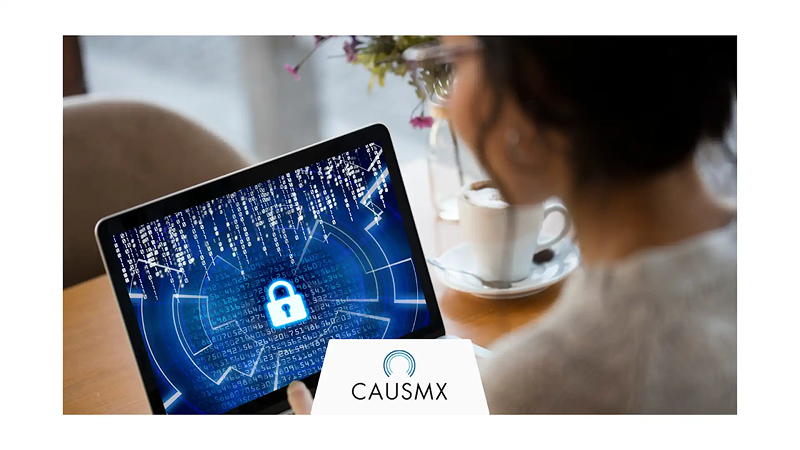
“Cybersecurity is not a destination; it’s a continuous journey that requires vigilance and education.” Ryan Locking, Vice President of CAUSMX Technologies
The digital frontier is expanding, and with it, the risks of cyberattacks are becoming increasingly unpredictable. Research shows that in 2023, 79% of organizations reported a significant increase in cyber threats.
As Cybersecurity Awareness Month approaches, it serves as a timely reminder for individuals and businesses alike to prioritize their cybersecurity practices.
This blog aims to equip you with actionable steps to enhance your cybersecurity awareness and practices, ensuring your personal and professional data remains protected.
Cybersecurity Awareness Month was launched in October 2004 as a collaborative effort between the U.S. Department of Homeland Security and the National Cyber Security Alliance. Its primary aim is to promote cybersecurity education and best practices across the nation. This month serves as a platform to engage the public and businesses about the importance of cybersecurity and the steps they can take to protect themselves online.
Each year, Cybersecurity Awareness Month has a specific theme. For 2024, the theme focuses on “Secure Our World,” encouraging everyone to anticipate upcoming threats and embrace new technologies to bolster defenses.
Phishing attacks are among the most common cyber threats you may encounter. Cybercriminals use deceptive emails and websites to trick you into revealing sensitive information, such as passwords or credit card numbers.
Did you know that 90% of people feel confident they can recognize a phishing email, yet only 5% actually pass a phishing test? It’s vital to recognize the signs of phishing attempts, such as poor grammar, generic greetings, and suspicious links.
Ransomware is a type of malicious software that encrypts your data, holding it hostage until you pay a ransom. The consequences can be devastating, leading to lost revenue and a tarnished reputation. The ransomware landscape is evolving, with attacks becoming more sophisticated and targeted. Research shows that ransomware attack victims rose by 128.17% between 2022 and 2023.
Social engineering exploits human psychology to manipulate you into divulging confidential information. It often occurs through phone calls or in-person interactions, where attackers impersonate trusted figures. Be cautious and verify the identity of anyone requesting sensitive information.
| Cyber Threat | Description | Important Insight |
|---|---|---|
| Malware | Malicious software, such as viruses or spyware, designed to damage or disrupt systems and steal information. | Malware attacks often result in data theft or system disruption. |
| Distributed Denial of Service (DDoS) | Overloading a server with traffic to disrupt services or cause downtime. | DDoS attacks are becoming more frequent, often used to disrupt critical services. |
| Zero-Day Exploits | Attacks that target previously unknown vulnerabilities in software or hardware. | Zero-day exploits are dangerous because they occur before a fix is available. |
| Insider Threats | Threats from employees or others with inside access who intentionally or unintentionally cause data breaches or system damage. | Insider threats are responsible for 34% of data breaches . |
| Man-in-the-Middle (MitM) Attacks | Attackers intercept communications between two parties to steal or alter data. | Unsecured public Wi-Fi is a common entry point for MitM attacks. |
| Credential Stuffing | Attackers use stolen login credentials from one breach to access other accounts, exploiting reused passwords across multiple sites. | Credential stuffing is often fueled by widespread data breaches and reused passwords. |
| SQL Injection | Attackers insert malicious SQL code into queries to access, modify, or delete data in a database. | Poorly secured websites and applications are vulnerable to SQL injection attacks, which can lead to sensitive data exposure. |
Staying informed about the latest cyber threats is your first line of defense. Consider attending webinars, workshops, or online courses to boost your cybersecurity knowledge. Share what you learn with colleagues, friends, and family to foster a culture of awareness.
Creating strong passwords is crucial for securing your accounts. Utilize a combination of uppercase and lowercase letters, numbers, and special characters. Consider using a password manager to generate and store complex passwords securely.
Two-factor authentication adds an extra layer of security to your accounts. By requiring a second form of verification—such as a text message or authentication app—you can significantly reduce the risk of unauthorized access.
Keep your software, operating systems, and devices updated. Regular updates often contain security patches that protect against newly discovered vulnerabilities. Enable automatic updates where possible to ensure you’re always protected.
Using public Wi-Fi can expose you to cyber threats. Avoid accessing sensitive information or conducting financial transactions on unsecured networks. If necessary, use a virtual private network (VPN) to encrypt your connection.
Throughout Cybersecurity Awareness Month, numerous events, webinars, and workshops take place. Participate in these initiatives to expand your knowledge and connect with cybersecurity professionals.
Empower others by sharing what you learn during Cybersecurity Awareness Month. Discuss cybersecurity practices with friends and colleagues, reinforcing the importance of staying vigilant against cyber threats.
Join local cybersecurity organizations or online forums to engage with the community. Networking with like-minded individuals can provide valuable insights and foster collaborative efforts in enhancing cybersecurity.
Regularly checking your data can help you identify any potential breaches or unauthorized access. Here are some actionable steps:
Cybersecurity Awareness Month serves as a critical reminder to prioritize your online safety. By understanding common threats and implementing best practices, you can significantly enhance your cybersecurity posture.
CAUSMX Technologies offers expert guidance and support to help you navigate the evolving digital landscape. Take charge of your cybersecurity today—contact us for more information and to schedule a consultation.